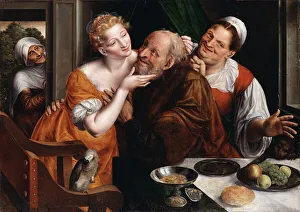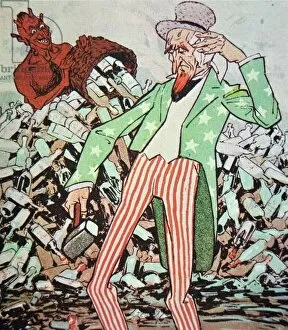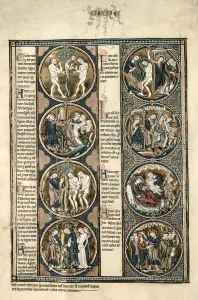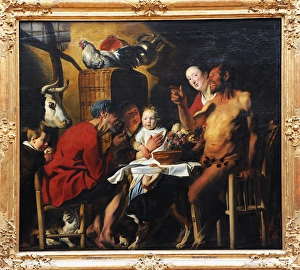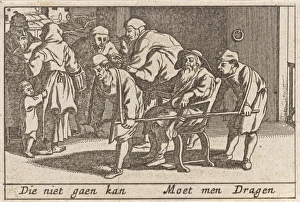Moralizing Collection
"Moralizing through Art: Exploring the Depths of Human Nature" In the intricate details of a cabinet from Antwerp, circa 1650, we find a glimpse into the world art
All Professionally Made to Order for Quick Shipping
"Moralizing through Art: Exploring the Depths of Human Nature" In the intricate details of a cabinet from Antwerp, circa 1650, we find a glimpse into the world art. This particular piece transports us to a brothel scene depicted in oil on panel around 1540. The artist's intention becomes clear as he seeks to shed light on the consequences and complexities surrounding such establishments. Moving forward in time, we encounter "The Ill-matched Pair" painted on wood in 1566. Hieronymus Bosch's Table of the Seven Deadly Sins further emphasizes mankind's struggle with morality. These works serve as reminders that our actions have repercussions and that virtue should guide our choices. Even political cartoons join this narrative; one shows Uncle Sam exhausted by bootleg produced by the devil himself. Here, moralizing takes center stage as society grapples with temptation and its impact on individuals and communities alike. Delving deeper into history, we discover "The Toledo Bible Moralisee, " an exquisite vellum manuscript dating back centuries. Its pages unfold tales meant to instruct and inspire readers towards righteous paths. Flemish Baroque painter Jacob Jordaens contributes his own perspective through his masterful brushstrokes. His work captures moments where compassion triumphs over adversity - be it a boy leading the blind or old men being carried along life's journey. Lastly, an intriguing sculpture from Moche Epoch showcases eroticism intertwined with moral lessons—a testament to how even taboo subjects can carry profound messages about human nature and societal norms. Through these diverse artistic expressions spanning different eras and mediums, we witness humanity grappling with its own flaws while striving for higher ideals. Moralizing art serves not only as aesthetic pleasure but also prompts introspection—reminding us that every choice has consequences and encouraging us to navigate life guided by virtue rather than succumbing to vice.


